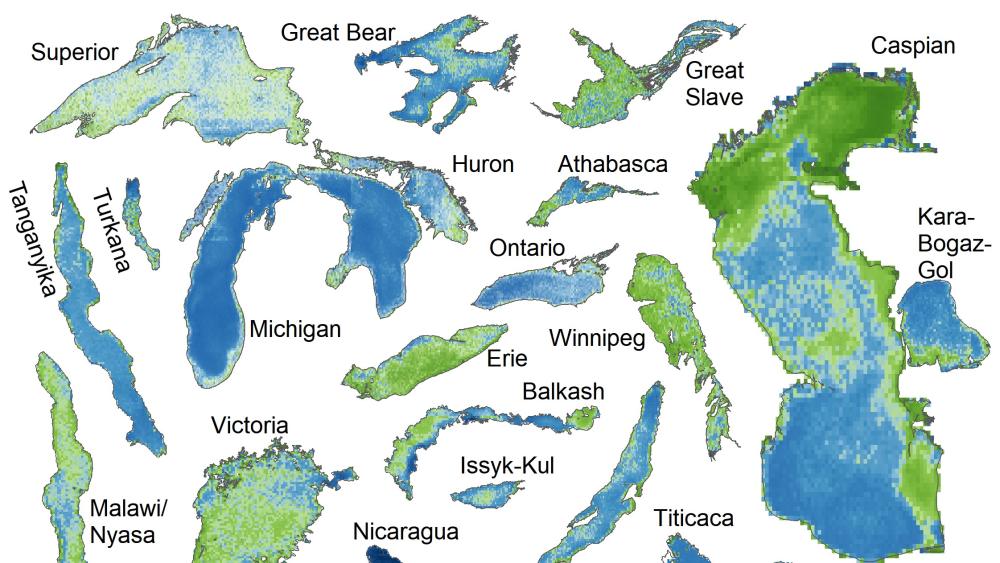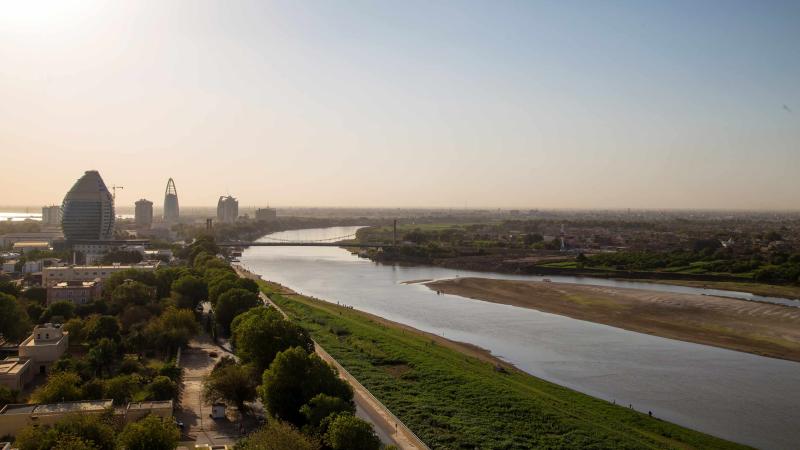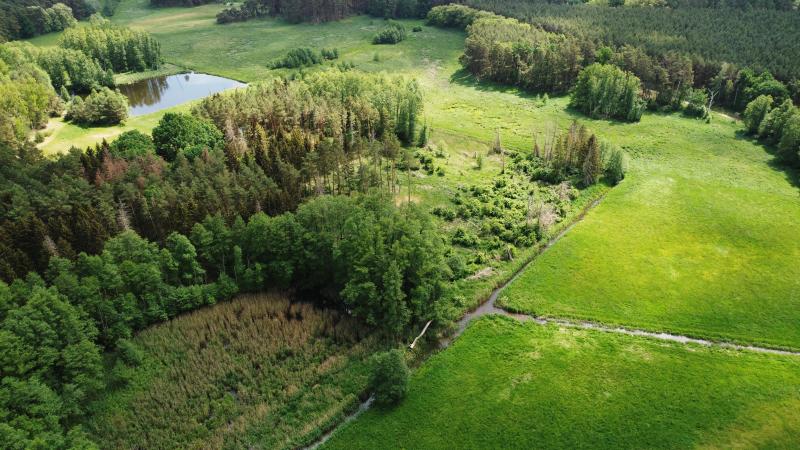
Mapping of lake surface chl-a reveals variable responses of lakes to global change (1997-2020).
The growth of phytoplankton, i.e. algae in the water, is an important parameter for assessing water quality. One method of determining algae concentration is to measure chlorophyll-a in the water. Chlorophyll-a is a green pigment that phytoplankton use to absorb sunlight. Also called leaf green, chlorophyll incidentally makes all plants appear green. Chlorophyll-a in surface waters can be calculated by measuring the colour of the water "seen" by sensors on satellites in space, almost the way our eyes see the colours of water.
"The amount of phytoplankton in lakes tells us how much nutrients are available at the base of the food web for other animals. Changes in phytoplankton abundance are part of the natural seasonal cycle - similar to seasonal changes in plants on land - but can also be an ecosystem's response to major external disturbances such as climate change. Every change has an impact: More phytoplankton can degrade water quality, less can reduce fish populations," explained IGB researcher Benjamin Kraemer, the study's lead author.
Like a puzzle: If you look at the individual pieces, blue dominates
The researchers analysed satellite data for the period from 1997 to 2020 from 344 lakes worldwide. These represent 94 per cent of the volume of global freshwater lakes. From this, they calculated a trend for each of the lakes studied, as well as the trends per defined area (pixel) and for each day of the year. The size of the pixels was 1 km for lakes in Europe and 4 km for the rest of the world, because the data sources for this were limited.
It showed that 63 per cent of the lakes became greener, i.e. algae growth increased. "However, not all lakes are equal and the largest of the large lakes tended to be getting bluer over time. So, imagine a jigsaw puzzle of the world ‘s largest 344 lakes where each lake is made up of many puzzle pieces, each one blue or green. If the puzzle pieces were broken up and divided into blue and green groups, you would end up with more pieces in the blue cup, simply because the area share of blue is higher," said Benjamin Kraemer.
Why has the algae growth of lakes developed in such a contrary way in climate change?
The researcher explains the processes as follows: "Climate warming can lead to an increase in phytoplankton, for example because the growth phases become longer or because the number of animals that feed on phytoplankton is reduced. Nutrients that are washed into water bodies from the surrounding landscapes also stimulate algae growth. However, a lake can also become bluer under climate change. This is particularly related to the thermal stratification of a lake, which can become more stable through warming: The warming of the surface water then leads to nutrients being 'trapped' below this layer. This makes these substances inaccessible to phytoplankton and leads to its reduction and subsequently a bluer lake."
In an earlier study, the scientist was already able to show that in the course of these processes, algae growth continues to decrease in algae-poor lakes, so blue lakes become bluer, and in algae-rich lakes, algae growth is boosted at warmer temperatures, so they become greener.
Why large lakes tend to become bluer: temperature stratification, invasive mussels and management measures
The researchers were able to show why large lakes tend to become bluer by taking a closer look at the individual examples. The changed stratification behaviour plays a role in many cases. In Lake Lagoda, Europe's largest lake in northwestern Russia on the border with Finland, fewer algae are also growing because of improved management. In Ontario, Huron, Michigan, an invasive species of mussel has spread. They filter the water and feed on phytoplankton.
Blue-green transitions
But different conditions can also prevail within a lake: for example, a greenish colour near human discharges from agriculture and industry reflects greater algal development due to a higher nutrient load. Shallow riparian areas that have experienced prolonged periods of high temperatures due to climate change have also tended to become greener over the past 20 years.
Adaptations of lake management
"Policy makers and lake managers should recognise that local changes at certain times of the year can vary greatly from lake-wide averages. Important water management measures such as the European Water Framework Directive and the Clean Water Act (USA) have set management targets based on lake-wide and annual averages, which do not capture the spatio-temporal complexity shown here" stated Benjamin Kraemer. Instead, management decisions or measures should be based on finer metrics that better account for spatio-temporal variations in water quality and water quality trends.





